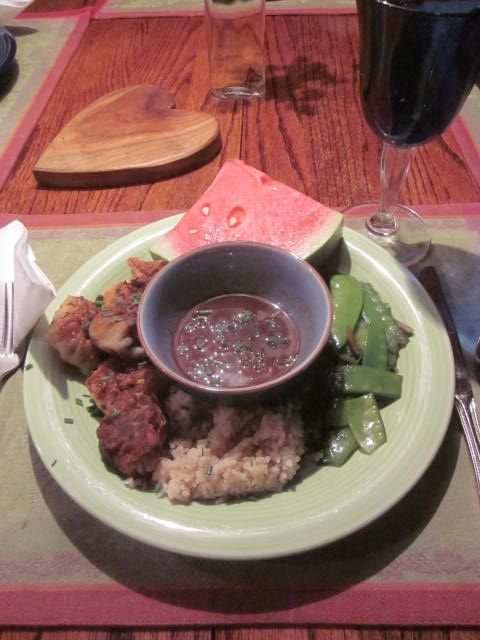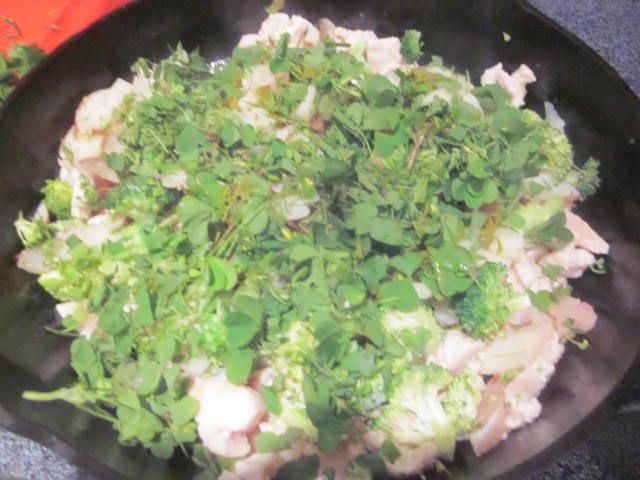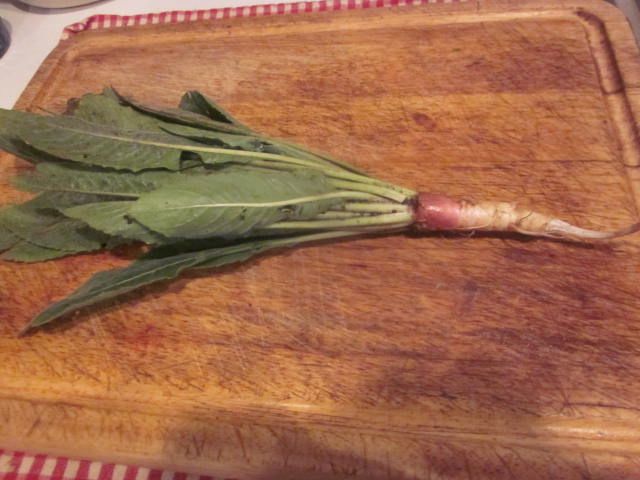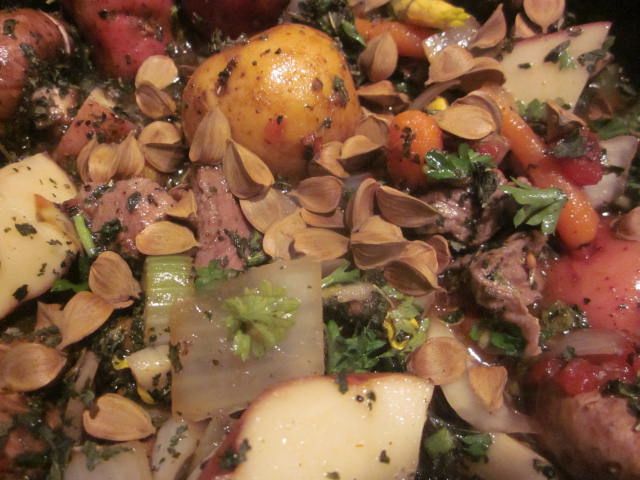
While shopping in nature this morning I found a tasty first year Evening Primrose plant, lots of lemony Wood Sorrel and decided to add them into my wonton mixture for dinner. Adding wild foods to any recipe is a great way to boost the nutritional value of a meal.
My Autumn Olive Berry jam had not set well so I used the syrupy results as the base of my dipping sauce. Simply added soysauce and chives from my garden. It was amazing, the perfect twang for a Chinese sauce.
The wonton filling: diced happy chicken breast, fresh grated ginger, potatoes and broccoli. To this I added a large bunch of Wood Sorrel, which the French are famous for making Sorrel soup with. It is high in vitamin C and simply off the charts with beta carotene. Because of it’s high oxalic acid content, Wood Sorrel, or Oxalis is best eaten cooked or at the very least blanched with boiled water to deactivate the oxalic acid crystals. Oxalic acid hastens the elimination of calcium from the body and inhibits absorption of calcium. So BE CAREFUL when eating these delightful lemony raw leaves, limit raw consumption to 15 leaves or so. Eat all you want cooked. Children love their lemony flavor so teach them not to eat too many of them raw.

Once the heat hits the green leaves it turns their vibrant emerald green color to an olive green.

I like frying foods in coconut oil because of it’s ability to stay stable in high heats.

Evening Primrose is prominent now among the host of Goldenrod, Asters, Ironweed, Joe Pye weed, and other late Summer bloomers. Actually Evening Primrose has been featured all Summer. Being a biennial plant it’s second year plants are mostly going to seed but there are still plenty of first year basal rosettes available that make the perfect addition to my wonton soup. The whole plant of Evening Primrose is edible and indeed medicinal, but the roots have a parsnippy flavor to them and make for good eating. The leaves I chopped with my herb scissors into the soup pot for the last 10 minutes of cooking. You can learn more about EVP here.

Some nutrition facts (per 1/2 cup) about these two wonderful wild edibles are:
Wood Sorrel
Protein: 2.1 g Carbs 5.6 g Iron 1.6 mg Potassium 338 mg, Vit C 119 mg, Beta Carotene 7740 ug, Niacin 465 ug
Evening Primrose seeds
Protein 15.1g Carbs 504g Fiber 3.6 g Calcium 1422 mg Phospours 533 mg Potassium 542 mg Niacin 3800 ug
The wontons were yummy. Next time I make them I’ll make all of their ingredients wild. Puffball mushroom can take the place of chicken, sweet and sour Burdock root (which I have lots canned to eat), Wood Sorrel and or any edible green to stir fry. I wonder if my family will notice?!



This sounds tasty! Do you FedEx!? Sadly I must wait for the sorrel to grow! Awesome recipe Holly and I can’t wait to try it!
Thanks Karen. It’s fun to be enjoying each other’s blogs! You are a valuable resource. Check it out everyone!
http://www.ediblewildfood.com/